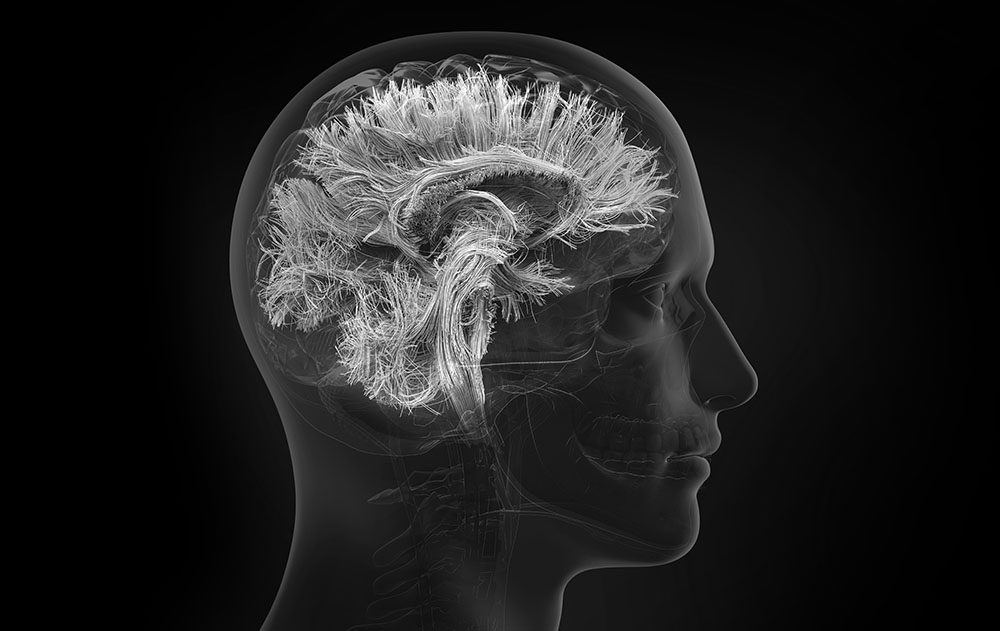Your mental states are primarily regulated by a subconscious region of your brain known as the limbic brain. This brain area, which is also responsible for your stress responses, reacts not only to everything that happens around you but also to your conscious thoughts. Therefore, by feeding your mind the right type of reflective thoughts, you can influence the mental state it generates in you in any situation.
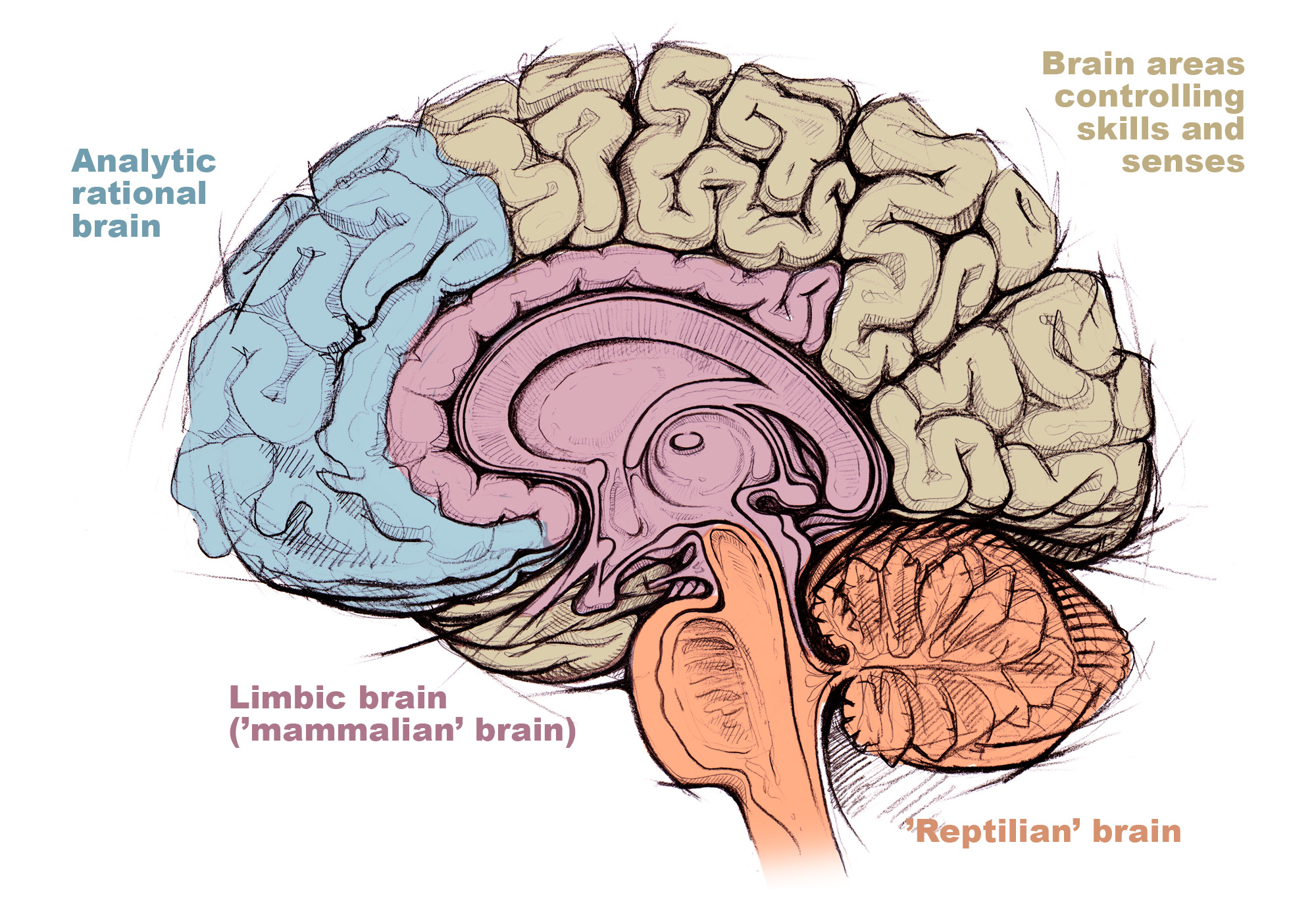
If you would like to experience how effectively Neuro-Reflective Thinking can help you in challenging times, the next time you find yourself in a stressful state of mind, instead of just being stressed, begin conscious self-reflection by following these five steps:
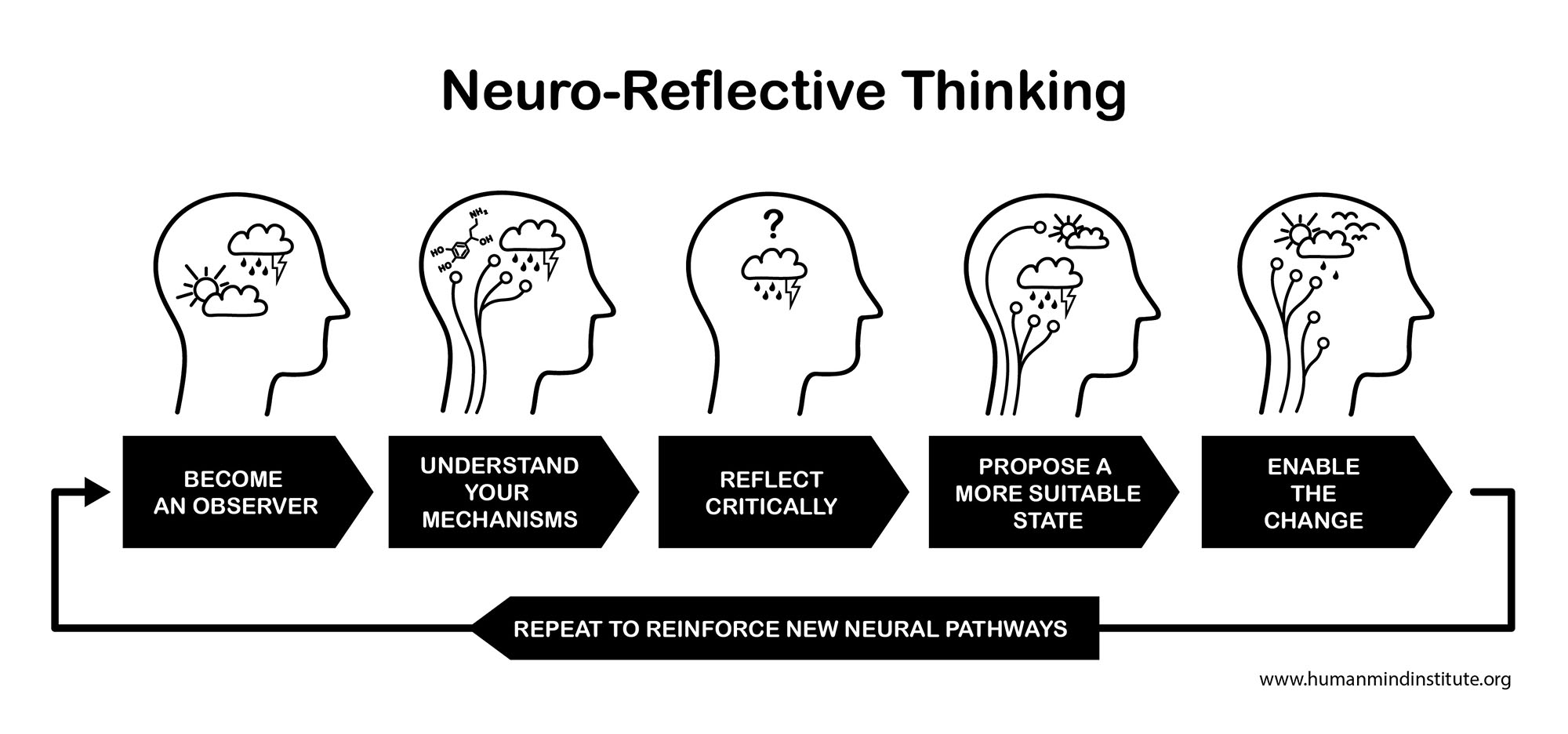
1. Become a Conscious Observer of Yourself and Recognize the Positive Intentions of Your Subconscious Brain.
When stress arises, instead of merely being under its negative influence, keep yourself aware that despite the bad feeling, it’s a natural response with purely positive intentions from your subconscious.

Recognize that stress is simply your limbic brain’s way of guiding you away from danger, uncertainty, or something you dislike, towards safety, success, and happiness by putting pressure on you to do something differently.
By adopting this perspective, you guide your subconscious to place you in a less stressful state of mind. This enables you to become a wise observer rather than merely a victim of your stress.
2. Understand Your Subconscious Mechanisms. Remind Yourself of the Function of Your Mental State to Detach from Negative Feelings.
Examine which of the following three stages of stress you are experiencing, and remind yourself how your subconscious tries to help you by making you feel bad in these ways:
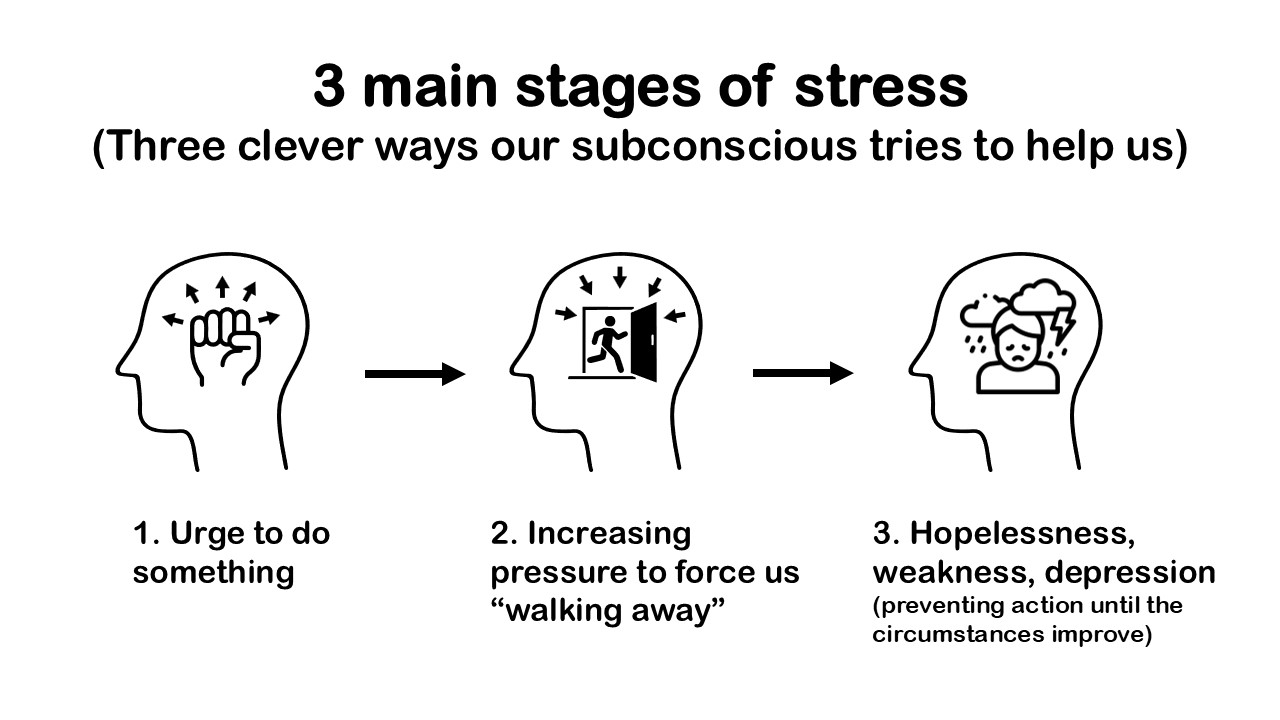
1. At first, stress usually triggers the feeling of an urge to take an immediate action to solve a problem, avoid something you dislike, or escape a potential threat.
2. If immediate action is not possible, your subconscious brain increases your stress to force you to give up what you’re doing and walk away.
3. If walking away is also not possible, over time, your subconscious brain makes you feel depressed. Its goal is to make you feel hopeless and unmotivated until the circumstances improve. This mental state is supposed to prevent you from wasting your energy and taking risks by trying to take actions that have little or no chance of resolving your problems.

Be aware that most of your long-lasting or recurring stress results from the incomplete programming of your subconscious limbic brain.
In your mammalian past, your stress mechanisms worked excellently to save you from threats and overcome almost all challenges encountered in nature. However, unfortunately, they are not the right solution for most of the problems you may experience in modern life. You cannot walk away from everything your subconscious marks as a potential threat, nor can you eliminate your stress triggers through immediate forced actions. Most threats identified by our subconscious in modern-day life are numerous and often complex challenges. Usually, none of them are directly life-threatening, and most require creative solutions and multiple steps to resolve, rather than immediate actions driven by stressful feelings.
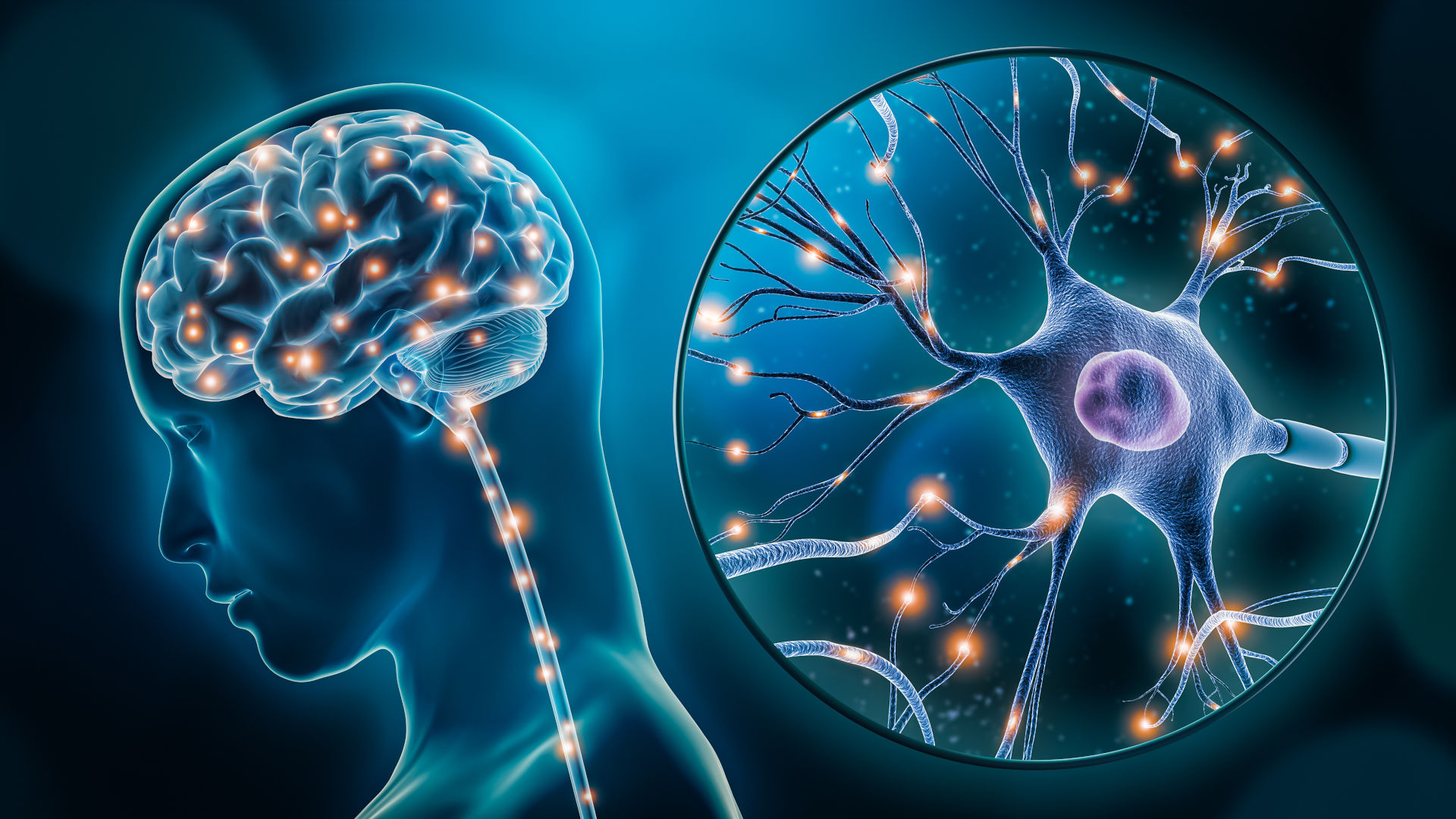
Remind yourself that what you feel is mostly the result of increased or decreased amounts of neurochemicals in certain parts of your brain and body.
If your thoughts are worrisome and you cannot awaken any positive feelings, it is only because your neurochemicals are doing their job excellently. They shut down your brain circuits responsible for positive thinking and boost the activity of regions responsible for negative thoughts and feelings. Practicing this deeper awareness in stressful situations will stimulate your limbic brain to help you feel more detached from your bad feelings.
3. Reflect Critically on Your Limbic Brain’s Default Reactions.
By practicing Neuro-Reflective Thinking, you can reprogram your brain to behave in better ways. Reflect to your subconscious that its stress reactions cannot achieve their intended goals in your situation. In fact, your subconscious makes you feel stressed mostly because our way of living has changed too quickly from being hunter-gatherers, and it simply does not know how to adapt and react to our modern-day challenges. Therefore, it just runs the old mammalian stress programming even when it cannot deliver the intended results.

Go to an mental talk with your subconscious. Make it aware that when you cannot solve a problem by an immediate action, walking away, or by being depressed, stress reactions are almost always wrong responses. They will not help you to escape threats or overcome your challenges easier as they did in your mammalian past. They only make your situation worse and increase your chances of failure. Even if you fail with what you do and have to deal with its consequences, stress will not help you to do that any better. In this step of Neuro-Reflective Thinking, you consciously plant a seed of doubt in your limbic brain about the usefulness of its stress reactions.
Doubt is one of the most effective tools your subconscious uses to hold you back from doing things that involve uncertainties. Now, you can cleverly use the same tool to influence its behavior in reverse. When you induce doubt in your subconscious about stress being the proper reaction and propose a mental state that would work better in your situation, it will begin to open up to shifting you towards that state.
4. Propose a More Useful Mental State for Your Subconscious Mind.
Remind your subconscious that feeling relaxed, energetic, and clear-minded is the most effective way to tackle your challenges. That is the fastest and safest way to escape problematic situations. You probably know some people who say things like: ‘I do not worry, because worrying does not help me to solve my problems’. Such people have intuitively developed some level of Neuro-Reflecting Thinking. They managed to convince their subconscious limbic brain that stress in their case is useless, and a relaxed state of mind is the most helpful for them.

Visualize yourself in the same situation, facing the same challenges, but with a completely calm and relaxed mindset, while being the best version of yourself.
Through this exercise, your subconscious brain can experience how it would be to be in the same challenging situation without stress even before you succeed to do it. To become immediately calm and relaxed may not be possible yet, but simply imagining yourself being so, should not be impossible at this point.
This visualization technique will trigger neurons in your brain, activated by your challenging circumstances, to start reaching out to connect with neurons that induce calm-mindedness, following the process of neurological rewiring discovered by Donald Hebb.

5. Enable the Change. Release the Pressure on Yourself to Help Your Limbic Brain Change Its Behavior Faster.
It may sound counterintuitive at first, but do not want to make your stressful feelings disappear immediately. Mental pressure is just like pressure in physics. It requires counterpressure to exist. If you try to push against it, you only sustain it longer. However, if you surrender and accept it, your stress will have no counterpressure to hold it, and it will start to dissipate gradually by itself.
In fact, the pressure against your bad feelings creates a major part of the negative emotions you experience when you are under stress or feel unmotivated. As long as you don’t release it, your mental state cannot change significantly. Since disliking is a stress response, disliking your own feelings means you are continuously maintaining your stress.

Because we learn from our early childhood to suppress our bad emotions it is challenging for most people not to do so. We hear from adults things like: “Don’t be angry. Don’t be sad. Don’t be afraid…’’, in place of learning to let those emotions be there, do their job and go away. However, once you succeed learning to accept your bad feelings, you will realize that it is the fastest way to make yourself feel much better in any situation. This is what’s also called ‘radical acceptance’ in psychology.
Give Time for Your New Neural Pathways to Grow. Practice and Repeat Neuro-Reflective Thinking for Stronger, Long Lasting Results.
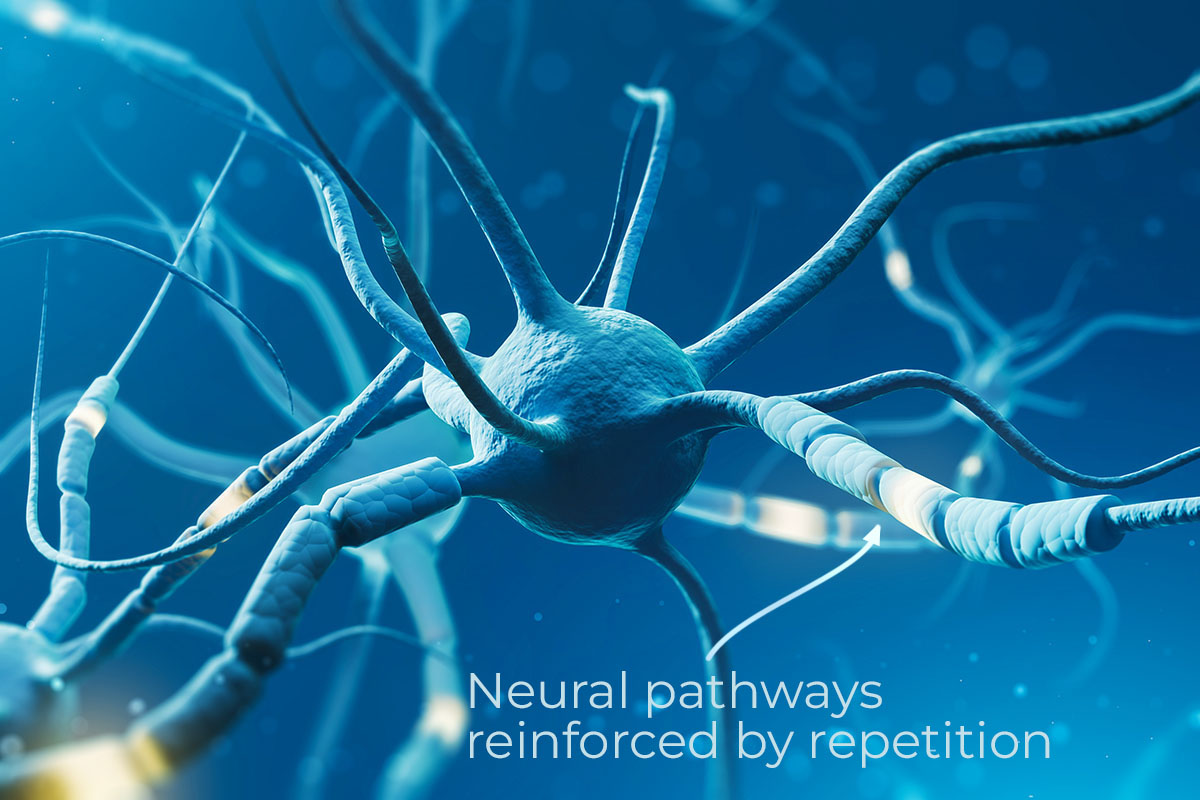
In some cases, if your reflective thoughts are very convincing, you can make your stress disappear at once and make yourself feel good instantly. These are the moments, when after a single realization you never feel bad anymore about something that always made you stressed before. However, most of the time it requires time and a repetition to train your limbic brain to change its emotional responses.
If, at first, Neuro-Reflective Thinking makes you feel only a bit less stressed, that is already a perfect beginning. After regularly practicing it, you will feel the positive effects getting stronger and stronger. It is simply because creating new neural pathways from stress to relaxation and calmness is a gradual process. Your new nerve connections grow and reinforce themselves only through repetition by the process called myelination.
Activate Neurochemicals of Relaxation in Your Nervous System to Transform Stress to Calm-Mindedness Even Faster.
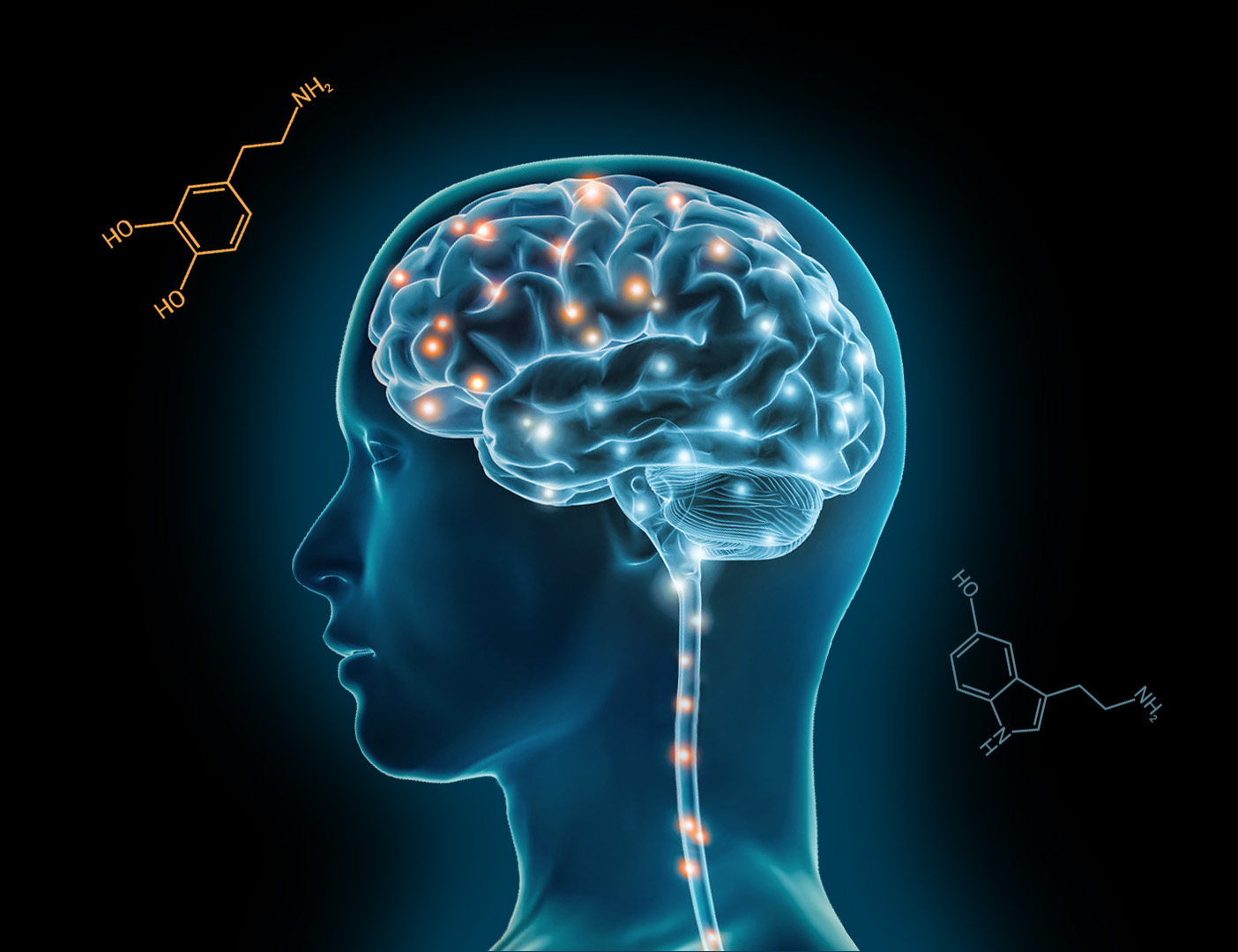
Changing how you feel through reflective thoughts may have a slow effect, but fortunately, there are great methods to achieve quicker and stronger results. There are certain nerves in your body you can trigger to release neurochemicals that can calm both your body and mind rapidly. It can not only make you feel better much faster, but also significantly accelerate the process of reprogramming your brain’s stress responses during Neuro-Reflective Thinking.
One of the ‘magic’ nerves that you can stimulate is the so-called phrenic nerve in your chest, which is connected straight to your breathing muscles. It sends signals to your nervous system about your actual breathing pattern. If you extend your exhalation times to be at least twice as long as your inhalation times, your phrenic nerve will trigger the release of acetylcholine and GABA in your nervous system.

These neurochemicals will lower your heartbeat, remove stress-related hormones from your body, and bring you into a relaxed state of mind rapidly. Acetylcholine also plays a role in focusing attention. Therefore, you will also notice that this breathing exercise will help you a lot to keep your attention on what you are doing. If you comfortably breathe in for 5 seconds and breathe out very slowly for 10 seconds or even longer, after a couple of cycles you will feel the effects immediately. If you pay attention to relax your upper body and your face further and further during exhalation, it will work even better. The more often you practice it, the stronger effects you will experience.
You can also read our articles about the brain-body connection to see more examples of techniques you can learn to influence the balance of neurochemicals in your nervous system through your body.
Learn to Control More of Your Stress-Responses and Bring Yourself Into Highly Positive Mental States.
While this five-step example provides a good impression of training your brain to unlearn stress, it is merely the ‘tip of the iceberg’.

By reading the book ‘Human Mind,’ you can learn about all your important mechanisms of stress and happiness without having to gather this knowledge from countless sources yourself. You can explore how to consciously master all these mechanisms through developing neurologic self-awareness and practicing more ways of Neuro-Reflective Thinking. Furthermore, you can discover much more about how specific neurochemicals affect you and how to influence their activity to guide yourself more accurately towards the state of mind that you wish to experience.
